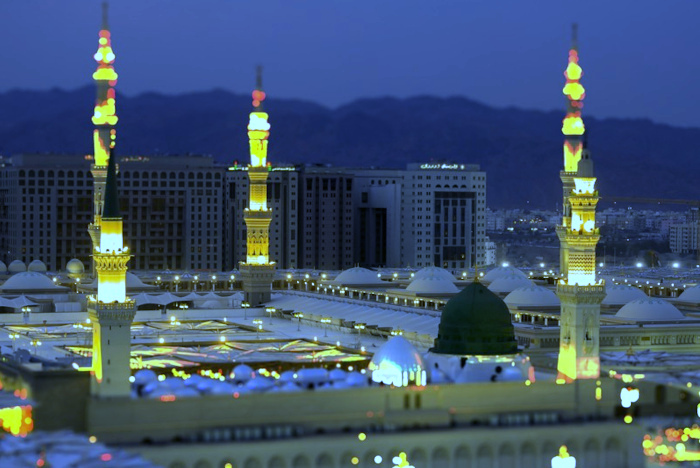
Hazrat Sheikhul Hadith, Moulana Muhammed Zakariyya (rahimahullah) mentions that from the year 1328 AH until 1345 AH, he was blessed to spend the month of Ramadhaan with his sheikh, Hazrat Moulana Khaleel Ahmed Sahaaranpuri (rahimahullah).
It was only in the year 1344 AH that Hazrat Sheikh (rahimahullah) did not spend Ramadhaan with Hazrat Sahaaranpuri (rahimahullah), as that year, Hazrat Sahaaranpuri (rahimahullah) was in Makkah Mukarramah while Hazrat Sheikh (rahimahullah) was in Sahaaranpur. Thus, Hazrat Sheikhul Hadeeth (rahimahullah) had spent no less than 16 Ramadhaans with his honourable sheikh, Hazrat Sahaaranpuri (rahimahullah)!
Hazrat Sheikh (rahimahullah) writes the following, describing the manner in which his sheikh would spend the month of Ramadhaan:
Awwaabeen Salaah
I had personally observed my ustaad, Hazrat Moulana Khaleel Ahmed Sahaaranpuri (rahimahullah) during many a Ramadhaan. He was weak, sickly and of advanced age, but despite these challenges, he used to recite one and a quarter para of the Qur’aan Majeed in his nafl salaah after Maghrib (awwaabeen). Thereafter, he used to have meals for about half an hour.
Taraweeh Salaah
After performing all other necessities in preparation for taraaweeh salaah, he used to stand in taraweeh for about two and a half hours when he was in India, and when he was in Madinah Munawwarah, the duration was three hours. Thereafter, he used to sleep for about two or three hours (depending on the season).
Tahajjud, Sehri and Fajr
Hazrat (rahimahullah) would then again recite the Qur’aan Majeed in Tahajjud Saalah until about half an hour before Fajr. Thereafter, he ate sehri. From that time until Fajr, he would remain busy in reciting the Qur’aan Majeed or wazeefas (duas and azkaar).
When the horizon became a little bright after dawn, he would perform the Fajr Salaah. Thereafter, he would remain in meditation (muraaqabah) until the time of ishraaq. After ishraaq, he would rest for approximately one hour.
Ishraaq until Zuhr
After resting, he would engage in writing his famous kitaab, Bazl-ul-Majhood (a commentary on Sunan Abu Dawood), until twelve o’clock in winter, and one o’clock in summer. He would then attend to the letters he had received by dictating the replies, after which he would rest until the Zuhr Salaah.
The Afternoon until Maghrib
Between Zuhr and Asr, he used to recite the Qur’aan Majeed, and from Asr until Maghrib, he would remain engaged in reciting tasbeeh and speaking to those who were present.
After he had completed writing Bazl-ul-Majhood, then part of the morning used to be spent in reciting the Qur’aan Majeed and reading certain deeni works, especially Bazl-ul-Majhood and Wafaa-ul-Wafa. This was his daily programme for nafl ibaadah throughout the year. In Ramadhaan, however, he used to spend a bit more time in his ibaadah, making the rakaats even longer.
(Fazaa’il-e-Ramadhaan pg. 6-7)
May Allah Ta‘ala grant us tawfeeq to emulate our Akaabir and derive maximum benefit from the month of Ramadhaan.
 Ihyaaud Deen An Effort to Revive Deen in Totality
Ihyaaud Deen An Effort to Revive Deen in Totality



